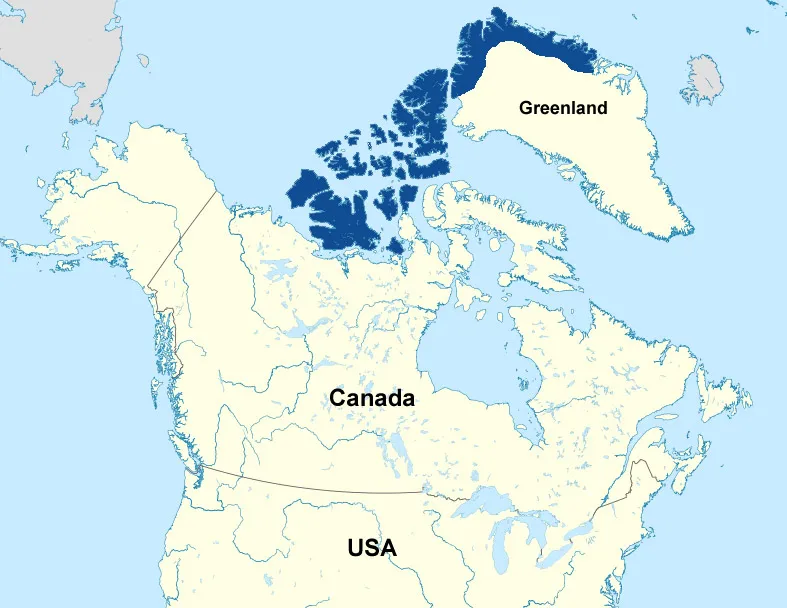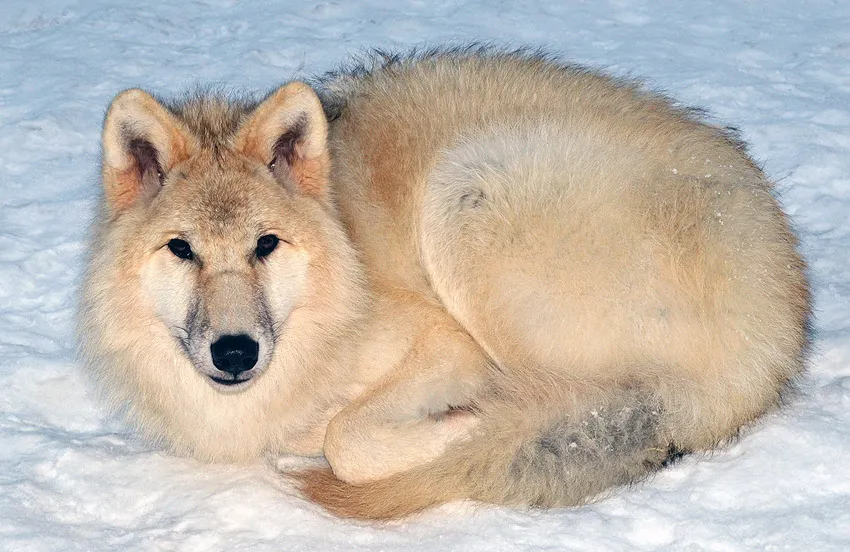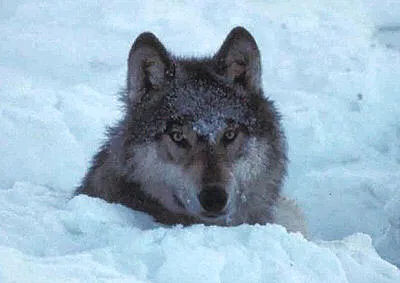Arctic Wolf - Facts and Adaptations
Canis lupus arctos
Arctic Wolves (also sometimes called the Polar Wolf or White Wolf) are animals of the far north. They live their whole lives above the northern tree line in the Arctic tundra of North America and Greenland.
arctic wolf facts - Basics
Average Weight: 32 to 70kg (70-155 lbs)
Average Length: 100 to 180 cm long
(3.2-5.9 feet).
Breeding Pattern:
As with other kinds of wolves, only the top ranking alpha
and beta females in a pack will be allowed to mate and reproduce.
This ensures that possibly scarce food resources at the
critical time will not be spread too thinly across too many
pups which could lead to the death of all or many of them,
up to twelve pups are born at a time.
Arctic wolves
may give birth in a den dug into the ground or snow where
this is possible, though it is not always the case if the
ground is frozen too hard. Ready-made dens in rocks, caves
or those dug in previous years by other wolves will also
be used.
Estimated world population:
- 200,000.
Diet and feeding: A wide
variety of food sources, the majority is of large herbivores
such as moose, caribou, deer, elk, etc. Also smaller prey
animals are eaten along with livestock, carrion, and garbage,
arctic wolves are opportunistic as are many predators.
Conservation status: Least Concern.
Distribution: North America and Greenland
but not extending into mainland Europe or Asia.

Distribution range of the Arctic
Wolf
How is the Arctic Wolf adapted to its environment?

Habitat:
An animal of the far north, living their whole lives above the northern tree line in the Arctic tundra, arctic wolves roam across North America and Greenland though don't extend into mainland Europe or Asia.
It is a kind of grey wolf, though is no longer thought to be a distinct subspecies, it is the least threatened of all grey wolf and subspecies populations as they live in isolated regions that rarely bring them into contact or conflict with man.
They survive in some of the coldest places on earth, they have a number of anatomical, behavioural and physiological adaptations that allow them to do this successfully. Arctic wolves live for around 7 to 10 years in the wild.
Arctic Wolf Adaptations:
- Small ears to reduce their surface area to volume
ratio (anatomical) - Compared to other the grey
wolf and other subspecies, arctic wolves have proportionally
smaller ears. This means that there is less surface area
to lose heat from compared to the larger ears of their more
southern cousins.
-
 Thick
camouflaged seasonal fur (anatomical) - The coat
of the arctic wolf is always thick and highly insulating.
It is light in colour, often almost white though can be
quite grey too in some individuals. There are inner and
outer layers to the fur with the inner being shorter softer
hairs for insulation and the outer longer hairs a water
and snow-proof layer that gets thicker as the colder weather
starts to arrive.
Thick
camouflaged seasonal fur (anatomical) - The coat
of the arctic wolf is always thick and highly insulating.
It is light in colour, often almost white though can be
quite grey too in some individuals. There are inner and
outer layers to the fur with the inner being shorter softer
hairs for insulation and the outer longer hairs a water
and snow-proof layer that gets thicker as the colder weather
starts to arrive. - Fur on the paws (anatomical) - to insulate
them from snow and ice and also provide for a better grip
on slippery surfaces.
- Thick layer of body fat (anatomical
/ physiological) - for insulation and food storage to help
survive the winter when food supply may be intermittent.
- Countercurrent heat exchanger in the paws
(anatomical/physiological) - Along with many other animals
including domestic dogs, there is a mechanism in the paws
of arctic wolves that keeps them at a lower temperature
than the body core so minimizing heat loss via this extremity
that is in contact with the ground. Blood entering the paws
is used to heat up blood that is leaving, this prevents
the core from being cooled by heat loss at the extremities.
Similar mechanisms are also found in the feet of birds such
as ducks and penguins.
- Very large territories with pack territories
of 2,500 square kilometers (1,000 square miles) or more.
(behavioural) - The
size of the territory is related to the amount of food available.
Artic wolves will hunt down larger animals such as caribou
ad muskoxen in packs and take smaller prey such as arctic
hares, lemmings etc. alone. They will form groups of 2 to
about 20 individuals or become solo for a time depending
on the amount and kind of prey available to them.

Wolves walking in single file
to reduce the effort of breaking fresh snow
Picture use:
Creative Commons Attribution 2.0 license - lying down, head up -
tsaiproject
Creative Commons Attribution 3.0 license - lying down, curled up
- Michael Gabler

